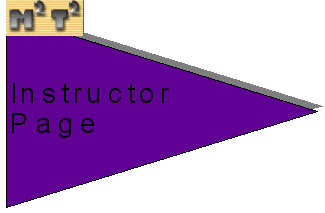|

Tips:
The Handshake
Problem
In this problem there are a certain
number of people in a room. If all of them shake hands, how
many total handshakes took place?
Here is a challenge for middle
school students interested in algebra. See if they can take
the formula for the number of diagonals and add the variable
n to the expression, then simplify the expression to get the
expression for handshake problem.
That is, show that
|
|
Time Estimate
|
Activity
|
Main Idea
|
|
20 min
(3:00)
|
Investigate the number of diagonals in a
polygon. Again, start with regular polygons.
|
Find the pattern.
|
|
45 min
(3:45)
|
The handshake problem.
|
Applications of this type of pattern. The
formula to find is:
|
Step-by-step guide:
1. Have participants draw diagonals connecting
the vertices of polygons
2. Discuss whether it makes a difference to the number
of diagonals if the polygon is regular, convex, or
concave. It makes no difference.
3. Have the participants fill out the table with the
number of sides and the number of diagonals and find the
pattern
4. Find the pattern for the number of diagonals plus
the number of sides. This formula is the answer to the
handshake problem. (See the sidebar at left).
Possible Problems and
Concerns:
- Not all patterns are linear. This pattern may be
harder to see than the others.
- With this problem the patterns become more complex.
Allow time for participants to experiment and discuss
this.
- It is important to take stock of where the progress
at this point. We began with polygons and sides, and now
we have complicated nonlinear expressions! We have
discussed limits, discrete values, graphing, using
variables and formulas. We are doing lots of algebra!
|

